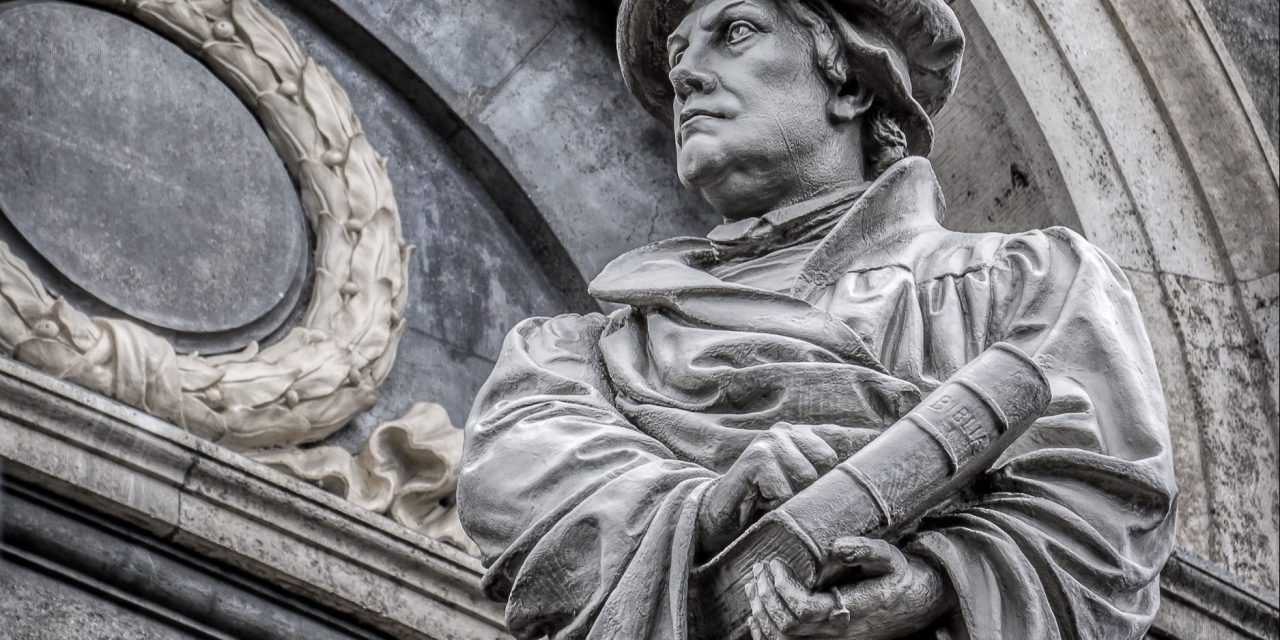It was a dark and stormy night…
A night with a massive thunderstorm to be precise.
On July 2, 1505, a young Martin Luther was making his way from his parents’ home back to the University of Erfurt (Germany) when he got caught up in the terrifying storm. He was nearly struck by lightning and cried out in desperation to St. Anne to save his life, vowing to become a monk if she did.
Luther survived and made good on his promise by immediately dropping out of school and entering St. Augustine’s Monastery in Erfurt. While there, Luther began noticing aspects of Catholicism that did not align with Scripture. The more he learned, the more uncomfortable he became with the discrepancies.
In 1517, Luther learned that the Roman Catholic Church (RCC) was selling indulgences. Essentially, the church was telling people that they could buy forgiveness for their sins – or even for the sins of loved ones who had already died. Luther was incensed by this blatant fraud. On October 31, 1517, he took a public stand. He nailed a list of grievances against the RCC to the doors of the All Saints Church in Wittenburg. These are now known as his 95 Theses.
Many historians believe that Luther only intended to begin a conversation to help bring an end to some of the abusive and unbiblical practices within Catholicism, but God had other plans. Just as the lightning strike on that dark and stormy night changed the trajectory of Luther’s life, so too did the strike of his hammer change the trajectory of the Reformation movement.
Though reformation efforts began much earlier with men such as John Hus (Bohemia) and John Wycliffe (England), who also recognized the need for reform within the RCC, the timing of Luther’s 95 Theses and the rise of the printing press brought greater knowledge of the issues to the general public. The movement spread like wildfire across Europe with more and more groups breaking away from the established state church. Men such as Ulrich Zwingli and John Calvin in Switzerland, and John Knox in Scotland gained great popularity for their teachings and their roles in leading the Reformation.
Responses to the Reformation covered the full spectrum. The RCC adamantly opposed the reformers and all they stood for, though they did hold the Council of Trent in an effort to address some of the more egregious issues of the church brought to light by the movement. Also, because the church and politics had become so intricately intertwined, rulers throughout Europe such as Henry VIII and Charles V were able to leverage the shifting religious tides for personal and political gain.
On the other end of the spectrum fell the Anabaptists. They felt that the mainstream reform measures fell short. Led by men such as Balthasar Hubmaier, Konrad Grebel and Menno Simmons, these men and women affirmed believer’s baptism, church discipline and a symbolic view of the Lord’s Supper.
As with any major historical or theological movement, there are many factors and nuances involved in the Protestant Reformation that cannot possibly be addressed in a short article, but it seemed appropriate to share this (extremely) brief overview on the anniversary of such a historic event.
Though the Reformation took on different looks in different areas, one of the dominant features of the movement as a whole was the desire to return the Bible back to a place of authority in the Church.
Whether you choose to formally recognize Reformation Day or not, I encourage you to take a moment to thank God for those who’ve come before us, who sacrificed so much in order to be faithful to the Lord and His Word. They are among the giants upon whose shoulders we now stand.




